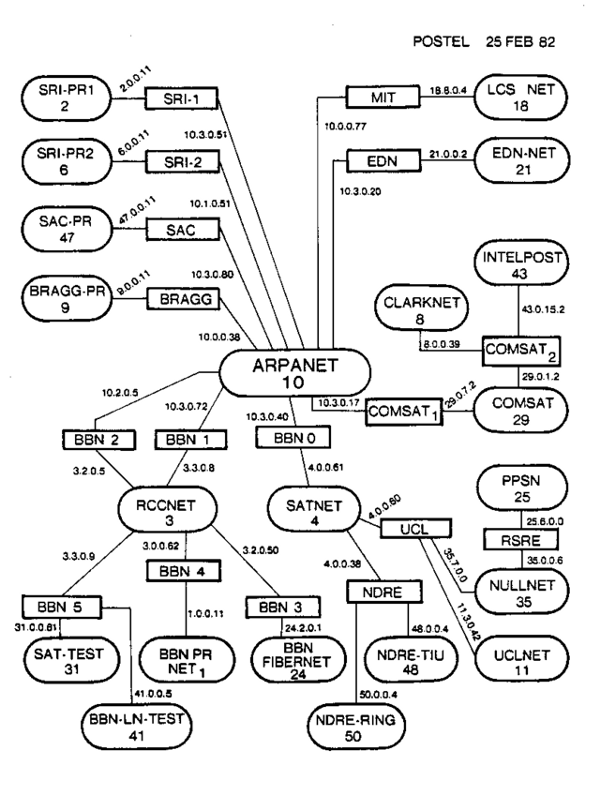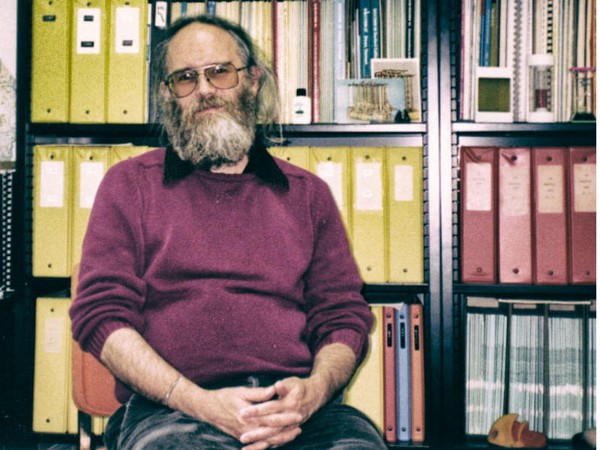

The names of the founding fathers of the web are well known to many of us: Tim Berners-Lee, Robert Cailliau, Bob Kahn, Marc Andreessen, Vint Cerf, Dave Farber, Bob Metcalfe, Richard Stallman and many more.
But one name doesn’t ring out as loudly as it should. Jon Postel was as integral to the history of the web as any of the figures above. He forged agreement around the standards that the Internet is built on, implemented the domain system (creating .com, .net and .org) and also fought tirelessly for Internet rights. He’d have been horrified at the current net neutrality debate, especially the ham-fisted Internet.org project currently under siege in India. When he died in 1998, it was mere months after an attempt to stop the U.S. government from wresting control of the web out of the hands of the Internet community. His commitment to tolerance and the principle that the Internet belongs to everyone are at the root of what we know today as “web culture.”
But let’s rewind back to the 1960s, when Postel was a student at UCLA. He completed his M.A. in engineering in 1968, after which he began a Ph.D. in computer science with Dave Farber as his thesis advisor. Very quickly, Postel joined the team that set up the first node on the ARPANET, the research network that eventually turned into the modern Internet.
Postel’s main job was to edit the “Requests for Comments” (RFC). Today, these act as official documents of Internet specifications and communications protocols; but back then they were much less formal, serving as a way for team members to suggest ideas without sounding too declarative, then asking people to comment on the suggestions. Postel’s role was to take these documents and form a consensus around them–no easy task, especially when the network began to sprawl across the world.
“Many bad design decisions were reworked thanks to Jon’s stubborn determination that we all get it “‘right,’ ” Vint Cerf told the Internet Society on the 10th anniversary of Postel’s death. “As the editor, he simply would not let something go out that didn’t meet his personal quality filter. There were times when we moaned and complained, hollered and harangued, but in the end, most of the time, Jon was right and we knew it.”

That wasn’t all. Postel founded and became synonymous with the Internet Assigned Numbers Authority (IANA), a precursor of ICANN, which doled out IP addresses to connected machines. This task, which he performed manually at first, was a crucial part of the early days of the Internet. Without a central registry of what was connected where, the network would lack the stability it needed to grow and scale. Oh, and Postel wasn’t just an administrator; he authored or co-authored more than 200 RFCs of his own, contributing to the design of the Internet.
By the 1990s, he’d reached deific status. The Economist wrote in 1997: “God, at least in the West, is often represented as a man with a flowing beard and sandals “¦ if the Net does have a god, he is probably Jon Postel, a man who matches that description to a T.” Postel disputed this classification, saying: “Of course there isn’t any “‘God of the Internet.’ The Internet works because a lot of people cooperate to do things together.”
But that didn’t stop him from staring down the U.S. government when it began its efforts to take control of the web. On January 28, 1998, Postel emailed eight of the 12 operators of the Internet’s regional root nameservers on his own authority, telling them to pull addresses not from a government-backed server but from a machine at the facility he ran at the University of Southern California. They complied, of course–though after a series of angry emails from senior government officials, he asked them to switch back a few days later. Some said this was a statement to show the White House that it couldn’t take control of the Internet from the community that had built it. Others said it was just a test to show that the infrastructure could be repositioned. Either way, it rattled the government. U.S. presidential science advisor Ira Magaziner told Postel, “You’ll never work on the Internet again.”

Just nine months later, in October 1998, Postel died of heart problems at the age of 55. His death was announced in an RFC authored by Vint Cerf, which read: “Someone had to keep track of all the protocols, the identifiers, networks and addresses and ultimately the names of all the things in the networked universe. And someone had to keep track of all the information that erupted with volcanic force from the intensity of the debates and discussions and endless invention that has continued unabated for 30 years. That someone was Jonathan B. Postel, our Internet Assigned Numbers Authority, friend, engineer, confidant, leader, icon, and now, first of the giants to depart from our midst.”
Despite his relative anonymity among the other founders of the Internet, Postel’s legacy remains. In 2014, almost 15 years after he initiated the controversy, the United States government finally ceded control of key Internet functions to the wider web community. And his name lives on in Postel’s Law, a robustness principle formulated in RFC 760 and reworded in RFC 1122: “Be liberal in what you accept, and conservative in what you send.”
“Those of us who came into the Internet after its beginning inherited not only a wonderful idea and technology, but also a wonderful society, sets of values and ways of working which are only too rare elsewhere,” Tim-Berners Lee told The Internet Society 10 years after Postel died. “Jon Postel stood at the centre of this, not only in his work–the service he performed as a public trust, but also for the things which, in doing that, he stood for. The concept that some things belong to everybody. Doing things because they are the right thing to do. Tolerance of different opinions–and so on–now known as the Internet culture. His death leaves us with a heavy responsibility to continue that tradition.”


How We Get To Next was a magazine that explored the future of science, technology, and culture from 2014 to 2019. This article is part of our The Internet section, where we report on the past, present, and future of the information superhighway. Click the logo to read more.
